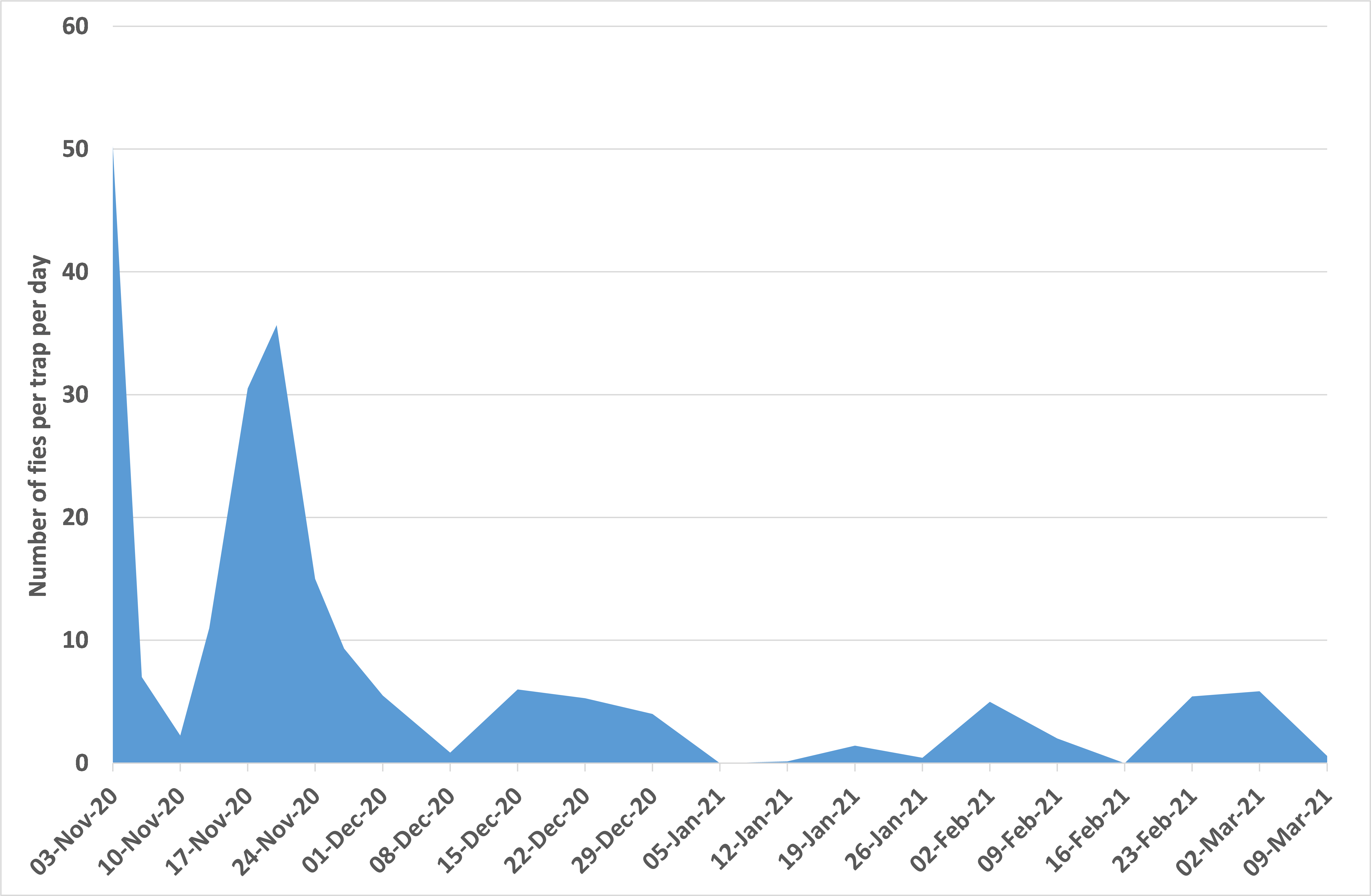Please click here to access the main AHDB website and other sectors.
Bean seed fly: The research pressure mounts to control this important pest
Tuesday, 6 April 2021
Cultivating three weeks before sowing is one option that may help prevent crop damage by bean seed fly, particularly as we lose plant protection products, explains Dawn Teverson.
The name bean seed fly is rather misleading because this fly doesn’t just affect beans. In fact, it affects more than 40 different host plants, including spinach, cucumber, onions, potato and maize.
Severe infestations can result in the loss of seedlings to such an extent that you may need to redrill for a viable crop. With the loss, or imminent loss, of insecticidal seed treatments, there is growing concern about managing this pest.
Control options for bean seed fly
Cultural control should always be the basis of a good IPM strategy. Trials at PGRO in 2020, as part of the grower-led trials at the field vegetable strategic centre, showed that bean seed fly pressure is greatest when cultivation and sowing are undertaken on the same day. This is likely to be because the flies are attracted to freshly cultivated soil.
Preliminary results from work undertaken last summer by Becca McGowan, a PhD student at the University of Warwick, confirmed this.
By cultivating and sowing on different days, three weeks apart, the PGRO trials showed that seedling losses could be reduced from around 20% to 1 or 2%. This could equate to a saving of around £300 to £350 per hectare.
Decision support tools are also an important part of the battle against bean seed fly. More detailed information is becoming available on the use of baited traps. For example, blue, white, and purple trap colours are the most effective and selective, as are traps placed horizontally.
Becca is also working on the development of a day-degree forecast to predict when the flies will first become active in the spring. This is particularly important as it coincides with the drilling periods for several crops affected by bean seed fly.
The loss of plant protection products
Seed treatments have been shown to be the most effective way of applying insecticides. However, all Extensions of Authorisation for Minor Use (EAMUs) for the seed treatment Force (tefluthrin) will expire on 31 December 2021. This means that growers need to have other options in place to protect their crops.
Syngenta have been working on the problem, and they are developing two granule treatments, one based on Force and the other on Karate (lambda-cyhalothrin).
If Force is re-registered for use in onions, it may be only at the rate of 13 g of active substance from 2022, the same rate as sugar beet. Currently, onions are treated with 29 g a.s./ha.
Onion growers are so concerned with the bean seed fly situation they have prioritised a trial to combat this problem as part of the grower-led work in the onion strategic centre.
The new trial will find out if the reduced rate of Force will be effective for the control of bean seed fly in onions. Plant counts at emergence and thereafter weekly through to the end of May will ascertain the level of plant loss.
Future work to help manage bean seed fly
Bean seed fly activity will be monitored in a number of locations by both the University of Warwick and PGRO. They will also be conducting further work on cultural approaches to managing bean seed fly infestations.
Bean seed fly numbers have been monitored at Wellesbourne through our Pest Bulletin over the winter. The graph below shows the numbers captured per trap per day from early November to early March. Bean seed flies have been captured most weeks apart from when it was very cold.
Other research will focus on understanding the life-cycle of bean seed flies, particularly over winter, to improve the consistency of predictions made by the day-degree forecast.

Numbers of bean seed flies captured per trap per day at Wellesbourne, Warwickshire, from November 2020 to early March 2021.
Which crops do bean seed fly affect?
Bean seed fly affects more than 40 different host plants, which include:
- Phaseolus beans
- Peas
- Broad beans
- Spinach
- Cucumber
- Melon
- Onion
- Pepper
- Potato
- Maize (sweetcorn)
Secondary hosts include:
- Alfalfa
- Cotton
- Strawberry
- Tobacco
Useful resources
AHDB, PGRO, University of Warwick and Syngenta are working together to tackle bean seed fly control.
Listen to the bean seed fly research presentations from an event in December 2020
The AHDB Pest Bulletin monitors bean seed fly activity. You can sign up for our weekly email alerts, which run from April to October;
Sign up to receive the AHDB Pest Bulletin weekly alerts
See the latest bean seed fly capture numbers
Further information about the PGRO cultivation and sowing date trials
Read the SCEPTREplus technical review for bean seed fly
For further information about the life-cycle, identification and control options, read our factsheet
Watch: Becky Howard, PGRO on why bean seed fly is an important pest for horticulture crops
Watch: Becky Howard, PGRO gives more information about the bean seed fly trials
Dawn joined AHDB in September 2014, having started her career at the National Vegetable Research Station, Wellesbourne (now Warwick Crop Centre) in 1984 as a plant pathologist specialising in bacterial diseases of beans in East Africa.
Becca McGowan is a PhD student funded by AHDB, PGRO and the University of Warwick based at Warwick Crop Centre, specialising in bean seed fly.

